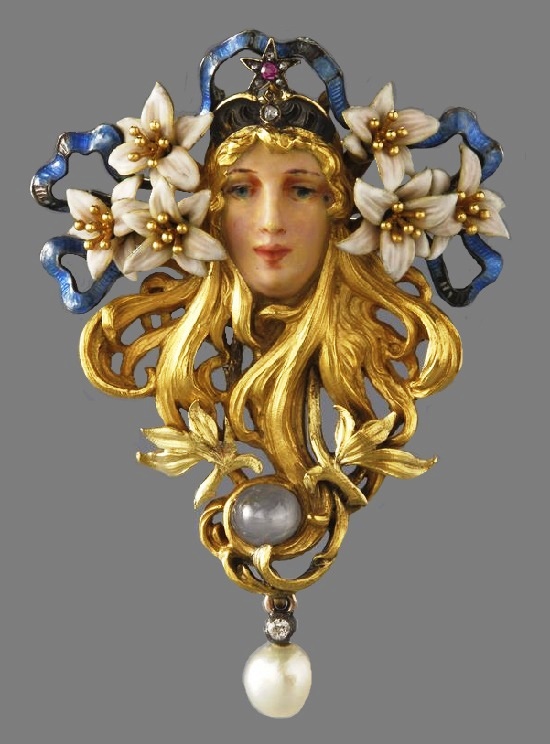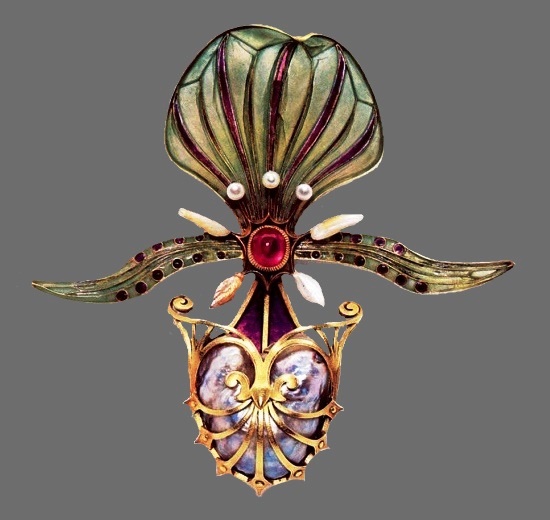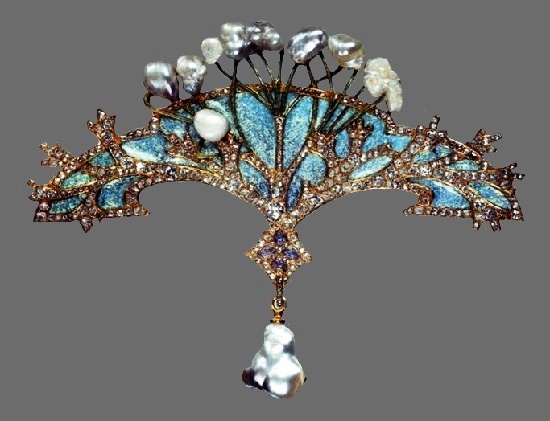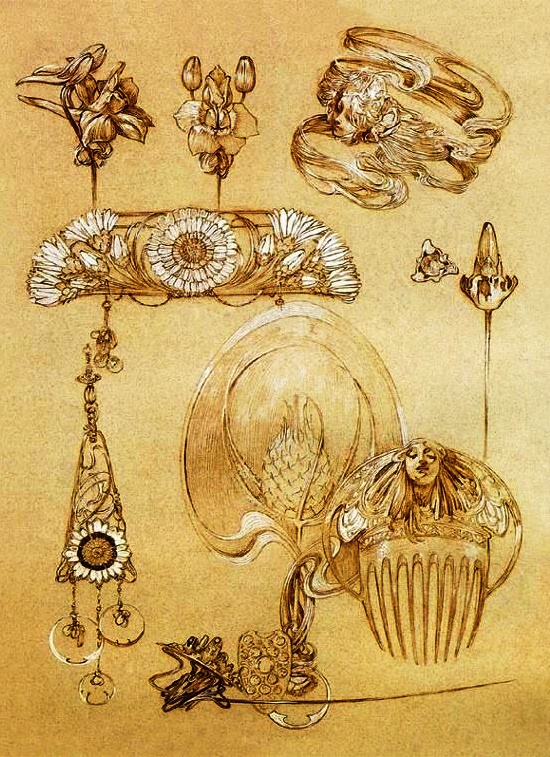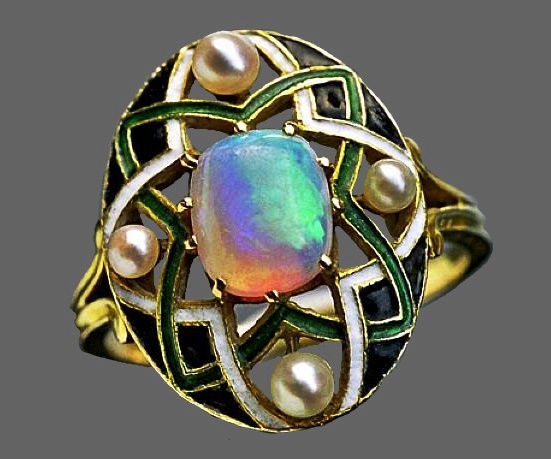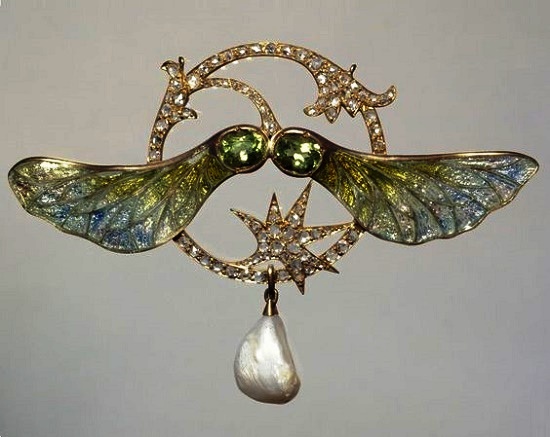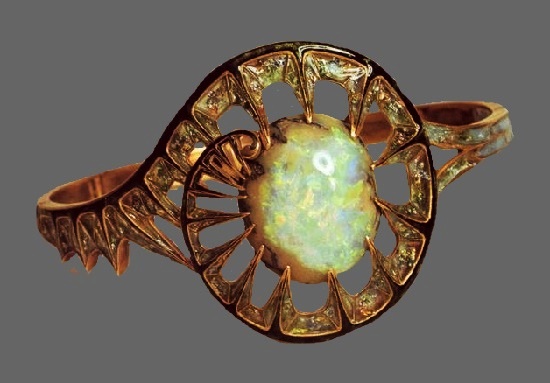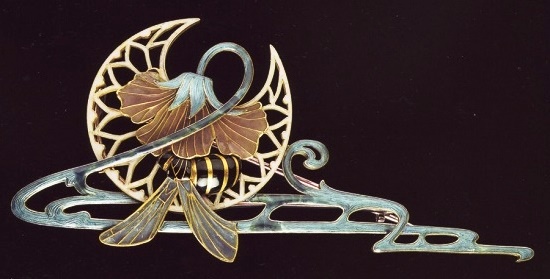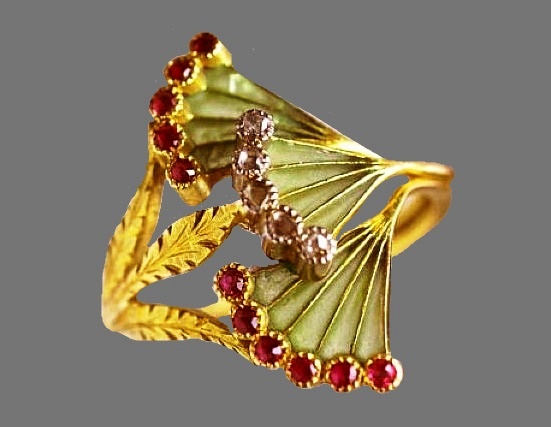French jewelry designer Georges Fouquet
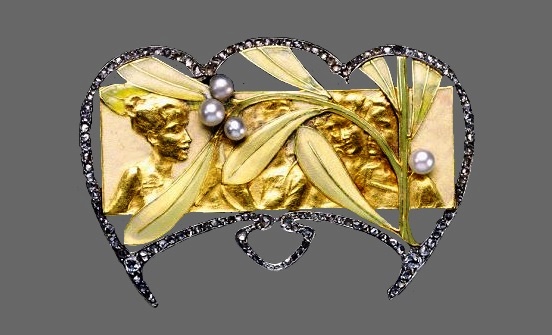
1903 gold and silver brooch, framed female relief. Sprig of mistletoe, enameled gold and pearls. French jewelry designer Georges Fouquet (1862–1957)
French jewelry designer Georges Fouquet
The history of Fouquet Jewelry House with three generations of jewelers lasted only 76 years. The founder of the company was Alfons Fouquet (1828–1911), who in 1860 opened his first store. A decade passed and the company became known both in France and in Europe. In 1895, his son – Georges Fouquet took over the management of the company.
Georges Fouquet followed his father and developed the ideas of art nouveau. By the end of the 19th century he had organized the production of amazing jewelry with stained glass enamel. A hereditary jeweler, Georges Fouquet had two things: excellent taste and commercial flair. And when Georges decided to separate from his father and create his own jewelry brand, he turned to the creations of Alphonse Mucha.
Noteworthy, they started working together in 1900, when Fouquet recently opened his own jewelry workshop. Preparing for an exhibition in Paris, he asked Mucha to make sketches for his work. At that time, Mucha had already established himself in Europe as an artist and creator of promotional products. In particular, female images, which included virgins of Slavic and Persian appearance, with mysterious looks, elusively crafty faces and shining hair.
For the Paris World Exhibition in 1900, Alphonse Mucha and Georges Fouquet designed an Art Nouveau collection. The public and critics accepted the collection very favorably. Fouquet Hall at the Exhibition was a huge success. For this exhibition, Fouquet received a gold medal, which for a long time sealed the union of the painter and the jeweler.
French jewelry designer Georges Fouquet

‘Medea’ bracelet created for Sarah Bernhardt when she played Medea and Cleopatra. 1899. Cloisonne enamel, rubies, opals and diamonds

Jewellery shop – a gem performed by Alphonse Mucha in 1901. Leon Farg made stained-glass windows and Auguste Seiss made sculptures for his shop
French jewelry designer Georges Fouquet
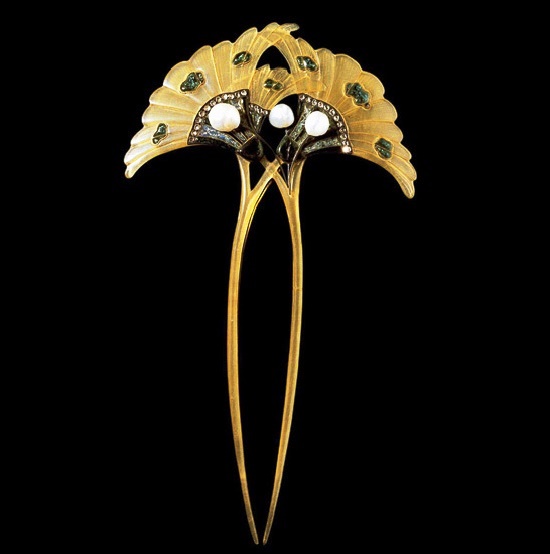
Lotus flower hairpin, 1905 – 1906. Bone, glitter enamel in gold, diamonds, convex pearls. 15 cm, Petit Palais Museum, Paris

Decoration for the corsage ‘Winged Serpent’, 1902. Gold, enamel, diamonds, pearls. private collection, New York

Butterfly hairpin, 1899. Tortoise shell, gold opals, amethysts and diamonds; 15, 0 cm, 9, 0 cm; Petit Palais Museum, Paris











